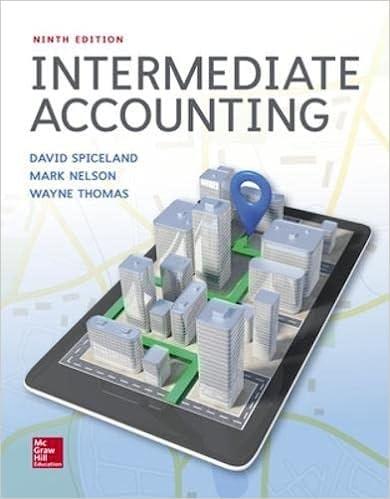Capwell Corporation uses a periodic inventory system. The company's ending inventory on December 31, 2018, its fiscal-year
Question:
Capwell Corporation uses a periodic inventory system. The company's ending inventory on December 31, 2018, its fiscal-year end, based on a physical count, was determined to be $326,000. Capwell's unadjusted trial balance also showed the following account balances: Purchases, $620,000; Accounts payable; $210,000; Accounts receivable, $225,000; Sales revenue, $840,000.
The internal audit department discovered the following items:
1. Goods valued at $32,000 held on consignment from Dix Company were included in the physical count but not recorded as a purchase.
2. Purchases from Xavier Corporation were incorrectly recorded at $41,000 instead of the correct amount of $14,000. The correct amount was included in the ending inventory.
3. Goods that cost $25,000 were shipped from a vendor on December 28, 2018, terms f.o.b. destination. The merchandise arrived on January 3, 2019. The purchase and related accounts payable were recorded in 2018.
4. One inventory item was incorrectly included in ending inventory as 100 units, instead of the correct amount of 1,000 units. This item cost $40 per unit.
5. The 2017 balance sheet reported inventory of $352,000. The internal auditors discovered that a mathematical error caused this inventory to be understated by $62,000. This amount is considered to be material. Comparative financial statements will be issued.
6. Goods shipped to a customer f.o.b. destination on December 25, 2018, were received by the customer on January 4, 2019. The sales price was $40,000 and the merchandise cost $22,000. The sale and corresponding accounts receivable were recorded in 2018.
7. Goods shipped from a vendor f.o.b. shipping point on December 27, 2018, were received on January 3, 2019. The merchandise cost $18,000. The purchase was not recorded until 2019.
Required:
1. Determine the correct amounts for 2018 purchases, accounts payable, sales revenue, and accounts receivable.
2. Calculate ending inventory and cost of goods sold for 2018.
3. Describe the steps Capwell would undertake to correct the error in the 2017 ending inventory. What was the effect of the error on 2017 before-tax income?
Ending InventoryThe ending inventory is the amount of inventory that a business is required to present on its balance sheet. It can be calculated using the ending inventory formula Ending Inventory Formula =... Financial Statements
Financial statements are the standardized formats to present the financial information related to a business or an organization for its users. Financial statements contain the historical information as well as current period’s financial... Accounts Payable
Accounts payable (AP) are bills to be paid as part of the normal course of business.This is a standard accounting term, one of the most common liabilities, which normally appears in the balance sheet listing of liabilities. Businesses receive... Accounts Receivable
Accounts receivables are debts owed to your company, usually from sales on credit. Accounts receivable is business asset, the sum of the money owed to you by customers who haven’t paid.The standard procedure in business-to-business sales is that... Balance Sheet
Balance sheet is a statement of the financial position of a business that list all the assets, liabilities, and owner’s equity and shareholder’s equity at a particular point of time. A balance sheet is also called as a “statement of financial... Corporation
A Corporation is a legal form of business that is separate from its owner. In other words, a corporation is a business or organization formed by a group of people, and its right and liabilities separate from those of the individuals involved. It may...
Step by Step Answer:

Intermediate Accounting
ISBN: 9781259722660
9th Edition
Authors: J. David Spiceland, James Sepe, Mark Nelson, Wayne Thomas





